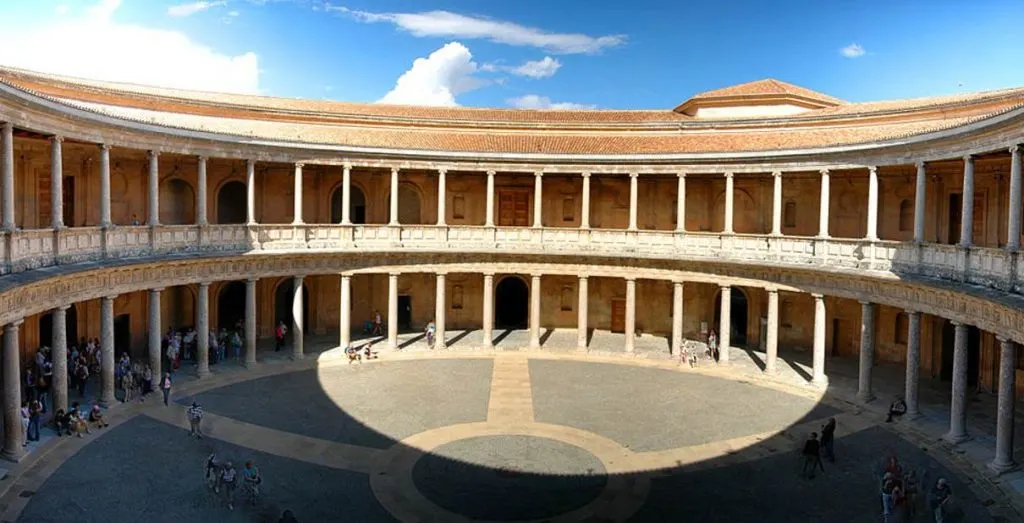One of the most amazing palaces complexes in the world can be found in the city of Granada in southern Spain. The Alhambra is a collection of buildings in a wide variety of architectural styles that started as medieval fortresses.
In this article, you’ll discover some of the most interesting facts about the Palace of Charles V, a Renaissance building that is an integral part of this amazing landmark in Granada.
1. It’s located on an outcrop of the Sierra Nevada in central Granada
The Palace of Charles V is one of the most distinctive features of the Alhambra, the immense palace complex in Granada that was built over multiple centuries.
What started as a small fortress was greatly expanded during Muslim rule, and more specifically, the Nasrid Dynasty. This dynasty ruled over part of the Iberian Peninsula as the Emirate of Granada between 1230 and 1491.
The palace was originally begun in 1238 and still features a large number of elements of Muslim architecture. It’s located on Sabika hill, an outcrop of the Sierra Nevada mountain range which overlooks the city of Granada, making it an extremely strategic location.
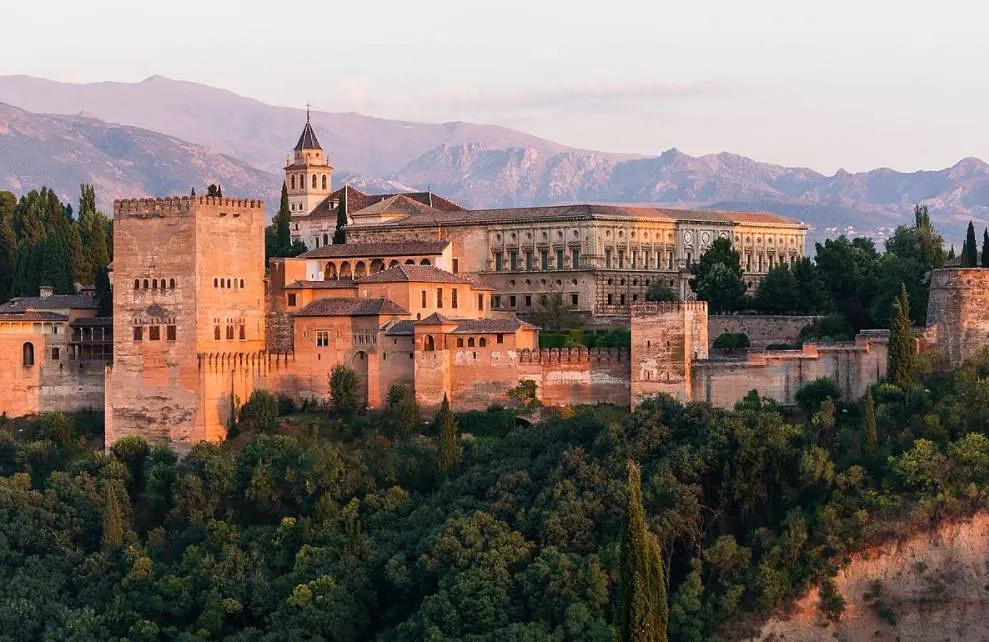
2. The palace was commissioned by the Holy Roman Emperor
The palace was named after Charles V (1500-1558), the Holy Roman Emperor between 1519 and 1556, and one of the most powerful men in Europe in the 16th century.
He owned various large palaces and castles all across Europe, and after spending the Summer of 1526 at the Alhambra, he decided to expand the complex so it could serve as one of his residences.
The construction of the Palace of Charles started in 1527 intending to move his court in the area here. After all, the city of Granada had only been recaptured from the Arabs in 1492.
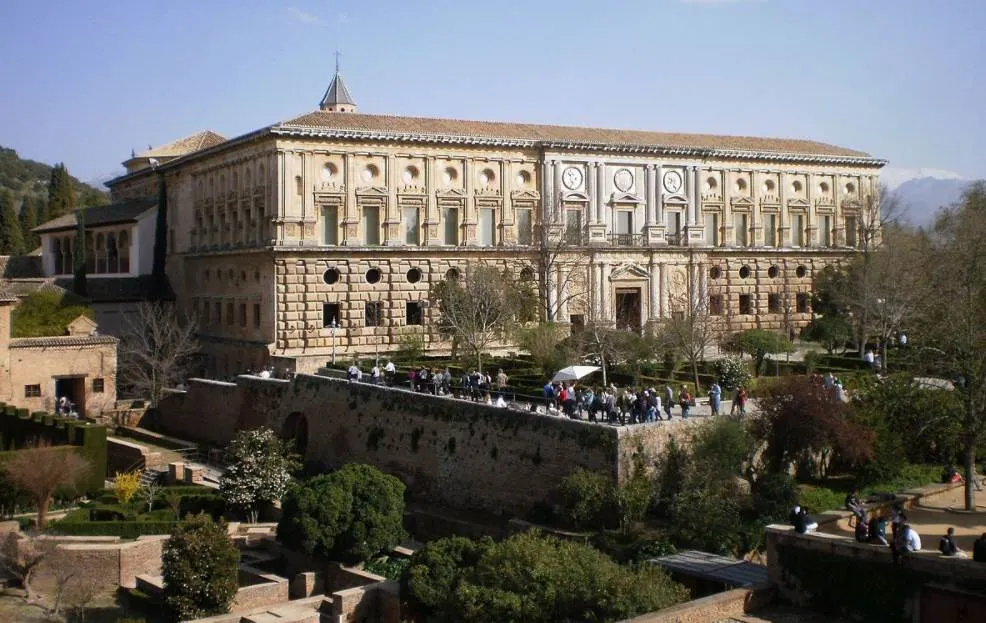
3. It was designed by an obscure Spanish architect who was trained in Italy
The building was designed by a Spanish artist and architect named Pedro Machuca (1490-1550), a man originally from Toledo of who we know very little. His only well-known work is this palace in Granada.

He was also a painter and is believed to have been a pupil of the renowned artist of the Renaissance era Michelangelo (1475-1564), a man with whom he presumably worked together in Italy before returning to Spain in 1520.
Michelangelo designed many structures and pubic spaces in Rome and was even the leading architect of St. Peter’s Basilica in the 16th century. His career as an architect hadn’t started yet at this time, though. This makes it doubtful that he learned his skills from this famous Italian artist.
Regardless of this notion, the goal of Charles V was to compete with the remarkable Moorish architecture that was present at the Alhambra.
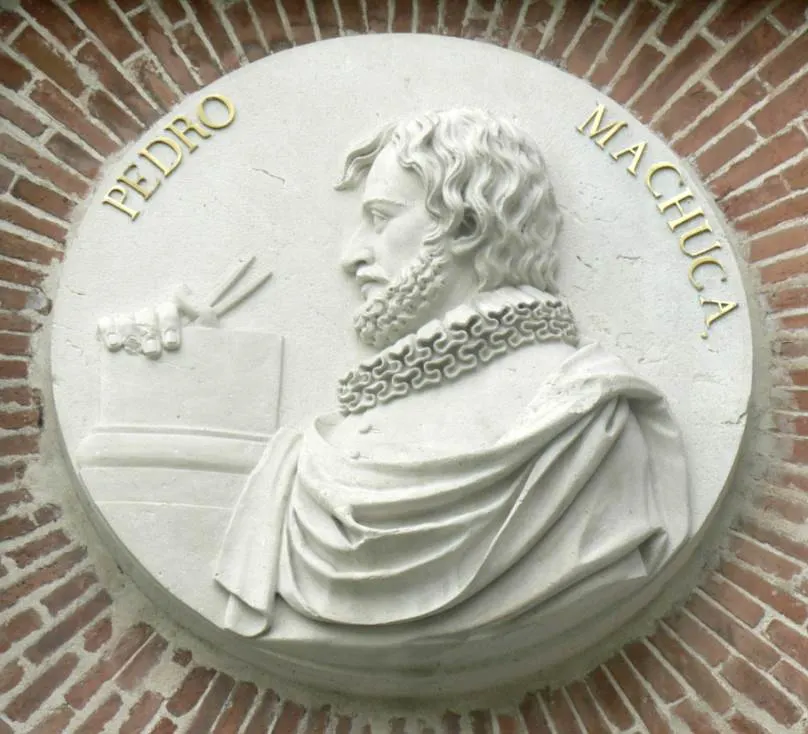
4. The structure features distinctive Renaissance architecture
The reason why we can be fairly certain that Machuca spent a lot of time in Italy is because of the distinctive Renaissance architecture in which he designed the Palace of Charles V.
Although it only features 2 floors, it resembles in many ways the magnificent Renaissance palaces in Rome and other cities in Italy.
It features a combination of a first floor that features rustication and finely dressed stones referred to as “ashlar” on the second floor. Because the palace is connected to the Arab structures nearby, only the southern and western façades were decorated.
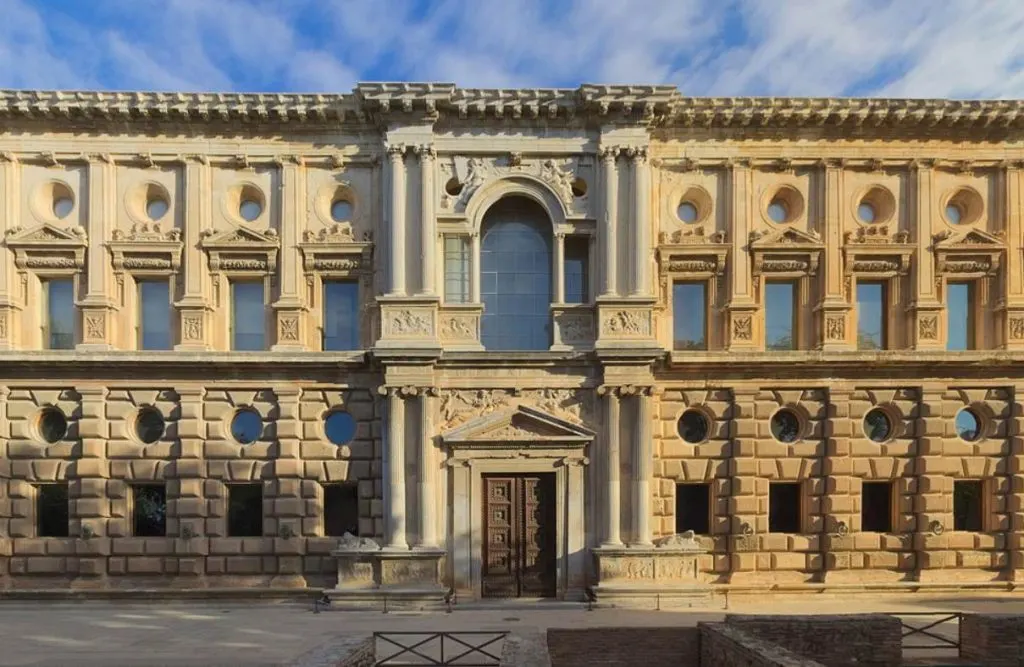
5. The structure features a revolutionary architectural design element
One thing is sure, Charles V wanted this palace to become one of the most amazing buildings in Spain. He didn’t have enough space on Sabika hill to build a monumental palace, so he had to rely on his architect to turn it into something special in a different way.
Pedro Machuca succeeded in this task because he not only incorporated elements of the most famous Renaissance buildings in Italy but also made this palace outshine them.
He integrated a circular courtyard into the square design of this building, a feat of architecture that shocks everybody who enters the building from one of the central doors.
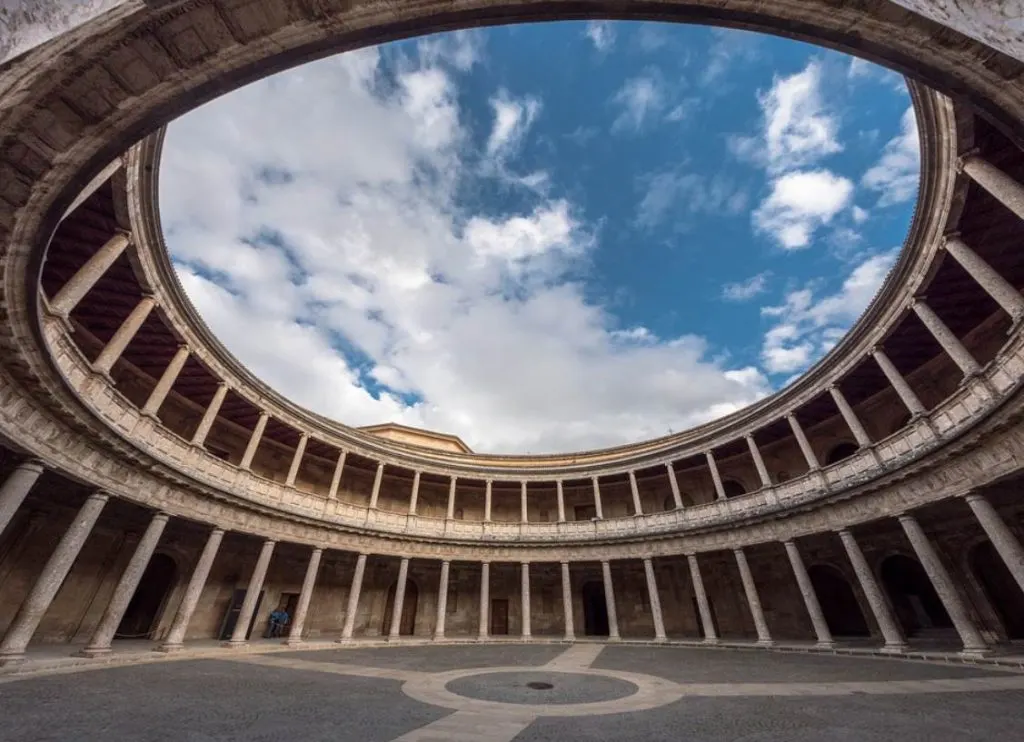
6. How big is the Palace of Charles V?
Because the palace only features 2 floors, it’s far from being the tallest building of the Alhambra palace complex. The square building has the following dimensions:
- Length: 63 meters (207 feet)
- Height: 17 meters (56 feet)
- Courtyard diameter: 30 meters (98 feet)
7. The building features several types of columns and pilasters
The dominant architectural style in Spain at the time that the palace was constructed was “Plateresque,” a style that emerged between the Gothic and Renaissance and which still incorporated Gothic elements.
This makes this Renaissance building even more revolutionary, especially because it already incorporated Mannerist features such as the combination of squares and circles. This style only emerged in Italy after the High Renaissance in the 1520s.
The palace features several different types of columns, including:
- The lower floor of the exterior features columns of the Tuscan order.
- The upper floor of the exterior features columns of the Ionic order.
- The 32 columns that encircle the central courtyard feature columns of the Doric order.
- The upper floor of the courtyard features columns of the Ionic order.
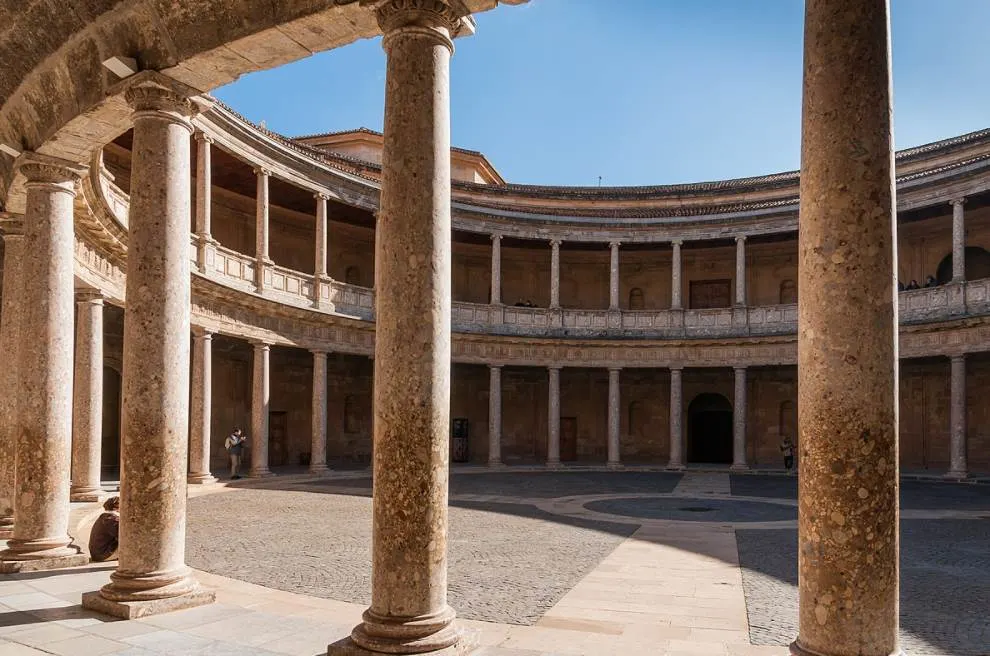
8. The palace wasn’t completed until the 20th century
Pedro Machuca died in the year 1550 with his work incomplete. Charles V died 8 years later and although the work was kicked up by several other Spanish architects, the building was never completed.
The Palace of Charles V even remained roofless for over 4 centuries because the roof we can see today was only installed in the year 1957.
Not a single monarch has lived in this building which now serves its purpose as a tourist attraction in which we can admire the remarkable architecture of the Renaissance that was established 500 years ago.
